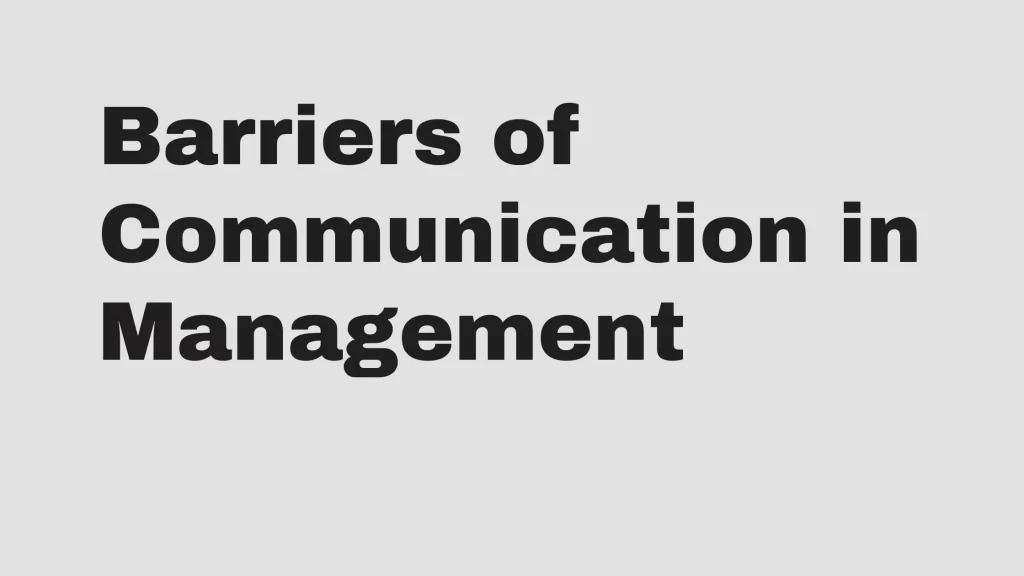Verbal communication is a cornerstone of human interaction, enabling us to convey thoughts, ideas, and emotions. However, effective communication is often hindered by various barriers that can obscure meaning and lead to misunderstandings.
From language differences to cultural nuances, emotional interference to physical impediments, numerous factors can disrupt the flow of communication. Understanding these barriers is essential for improving our ability to communicate effectively and fostering better relationships in both personal and professional settings.
Contents
Common Barriers of Verbal Communication
As we delve deeper into the complexities of verbal communication, it’s evident that various barriers can disrupt the smooth flow of dialogue. Highlighting these hurdles is pivotal in increasing our awareness, engineering solutions, and fostering clarity in our spoken interactions across diverse environments.
Environmental Distractions
External distractions are a prevalent barrier in verbal communication. How many times have I found myself in a discussion, only to keep looking at my phone’s screen for updates? It’s common in today’s high-tech world. Whether it’s the incessant phone notifications, the humming of machinery, or the general hustle-bustle around the corner, these distractions can disrupt our focus.

Noise
Beyond the audible distractions, there can be ‘figurative noise’, stemming from our surroundings. For instance, an oddly decorated room, temperature fluctuations, or unconducive meeting locations can interfere with our concentration. Such distractions can make what should be meaningful conversations, into a battle of maintaining focus. Ideally, choosing quiet, comfortable spaces for engaging in verbal communication is beneficial for maintaining attentiveness and enhancing understanding.
Linguistic Barriers
Efficient verbal communication can be further hampered by linguistic barriers. Not all conversations flow naturally. Sometimes they’re filled with jargon, ambiguous terms, or technical language that isn’t easy to comprehend and can lead to misunderstanding. Not to mention differences in language proficiency levels can make interaction difficult.
On the other hand, subtler aspects such as nuances in non-verbal cues or tone variations can also play a role in hindering clear communication. This is particularly evident when interacting across different cultures with unique norms, gestures, and expressions.
To sum up, being conscious of the potential barriers to verbal communication can make a significant difference. Recognizing your own barriers, understanding those of others, and tailoring your communication approach accordingly, is crucial in ensuring effective dialogue. Each barrier represents an opportunity to refine our skills and improve our communicative impact, no matter where we are or who we’re speaking to.

Cultural Barriers in Verbal Communication
Culture significantly influences our communication styles and practices. Because cultural norms and values shape our understanding and usage of language, cultural barriers often appear in verbal communication. Let’s delve into some key cultural barriers that can affect effective dialogue.
Different Communication Styles
Diverse cultures often present distinct communication styles. For instance, some cultures prefer direct and assertive communication, while others favor indirect and collaborative methods. This divergence often leads to contextual misunderstandings and linguistic differences as people interpret messages based on their cultural norms. Therefore, it’s crucial to remain aware of these differences and attempt to adapt accordingly.
Cultural discrepancies can also arise in the usage of jargon and technical language, which might not have similar connotations in all languages and cultures. Therefore, employing common language and avoiding specialized terminology whenever possible can assist in overcoming these barriers.
Nonverbal Cues
Culture significantly influences non-verbal cues. Each culture has unique gestures, facial expressions and postures which can be interpreted very differently in different cultures. For instance, in some cultures, maintaining eye contact while talking is a sign of respect, while in others, it can be considered disrespectful or aggressive. Misinterpretation of such cues can add another layer of complexity to cultural communication barriers. Hence, it’s crucial to understand and respect the non-verbal cues of various cultures to facilitate more effective verbal communication.
Language Differences
Language Differences or language proficiency can be a significant barrier in verbal communication. When individuals lacking a mutual language try to communicate, it’s common to encounter difficulties in understanding or expressing ideas correctly. Moreover, even in situations where a common language exists, ambiguities in meaning or variations in volume and tone can lead to communication breakdown.
To mitigate these issues, clear, slow, and articulate speech coupled with active listening can be highly beneficial. Additionally, utilizing translators or translation technology can also aid in overcoming language barriers in more diverse environments.
To sum it up, understanding and becoming vigilant about these cultural barriers is pivotal in establishing effective verbal communication across a spectrum of diverse backgrounds.

Overcoming Barriers in Verbal Communication
In our journey to master the art of verbal communication, we’ll encounter various obstacles, from linguistic differences to cultural nuances. However, these barriers shouldn’t discourage us. Instead, they should inspire us to become better communicators. This section will delve into several strategies: active listening techniques, building empathy, and clarifying misunderstandings.
Active Listening Techniques
The benefits of active listening cannot be overstated. It’s more than just hearing the words spoken by the other person. Active listening involves paying attention to non-verbal cues mismatch, tone variations, and even cultural nuances that may influence the message’s context. By concentrating on what the speaker is conveying, we’re less likely to fall prey to environmental distractions such as noise or technical difficulties.
To exercise your active listening skills, strive to :
- Focus your attention: Eliminate phone or multitasking distractions.
- Practice patience: Allow the speaker to finish their point before responding.
Building Empathy
Empathy is our passport to deeper connections. Understanding another person’s perspective, especially when affected by emotional barriers or socio-cultural backgrounds, can greatly improve our communication efficiency.
To build empathy, you can:
- Put yourself in the other person’s shoes: Try to understand their feelings and perspectives fully.
- Acknowledge their emotions: Validate their feelings genuinely without judging them.
Clarifying Misunderstandings
Miscommunication frequently results from ambiguities in meaning, mispronunciations, or the use of jargon and technical language. It’s our responsibility to ensure that our message is as clear and precise as possible.
To avoid misunderstandings, consider these tips:
- Be mindful of your linguistic ability and the receiver’s: Always cater your message to the receiver’s level of language proficiency.
- Reiterate or paraphrase if needed: If you suspect the other party may not fully grasp the message, take a moment to rephrase it.
This aids in promoting effective communication and fostering a conducive environment, no matter how linguistically diverse or culturally varied it may be.
Conclusion
Having explored the barriers of verbal communication, it’s clear that overcoming them isn’t an easy feat. It involves honing active listening skills, fostering empathy, and clarifying misunderstandings. Paying heed to non-verbal cues and tone variations can boost the effectiveness of our communication.
Moreover, understanding cultural nuances plays a crucial role in bridging communication gaps. While these strategies might seem challenging to implement, they’re essential for promoting effective communication in diverse linguistic and cultural environments. So let’s embrace these techniques and navigate the complexities of verbal communication with confidence.
Boko Ducky has over 10 years of experience in helping individuals and organizations improve their communication skills.



